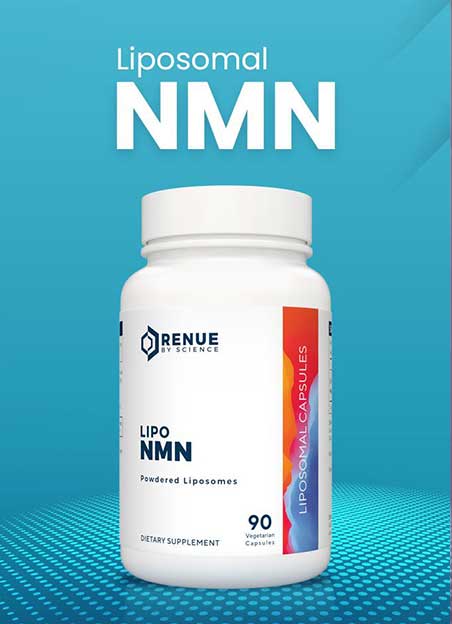Shilajit is found primarily in mountainous regions, especially in the mountains of the Himalayas. It is mainly famous for its benefits associated with male fertility and sexual wellness but it has a range of other benefits as well.
Shilajit is also called mineral pitch. Pure Shilajit is black in color and resembles tar in texture. It is shown in the figure below.

Pure Shilajit
Shilajit is mainly found in mountains where it gets developed over centuries when plants slowly decompose and merge with minerals.
Shilajit Sources

Picture by Mamun Srizon from Unsplash
As mentioned before, Shilajit is found in mountainous regions. Mainly, it was sourced from India, Pakistan, and Tibet’s high mountain ranges but over the years, it has been discovered in many other countries as well. In the Indian subcontinent, Shilajit has been an important part of ayurvedic treatments for many centuries.
Benefits of Shilajit
Over the years, researchers have validated several of the benefits attributed to Shilajit in historic and non-scientific sources. Several studies have shown Shilajit to be an excellent source of minerals and energy needed for the body.
Following is a list of some of the key benefits of Shilajit identified by research.
Low Testosterone Level and Male Fertility
The primary sex hormone in males is testosterone but some men struggle with low testosterone count. Symptoms of this condition can include the following:
- Increased body fat
- Fatigue
- Loss of muscle mass
- Hair loss
- Lower sex drive
According to a 2015 study by S Pandit and their team, shilajit has the potential of increasing testosterone levels in men. In their study, men aged 45 to 55 were given 500 mg of Shilajit while half of the participants were given the placebo.
Those who received Shilajit showed elevated testosterone levels after 3 months. The testosterone level in this group was significantly higher which indicates the potential of Shilajit as a male fertility and testosterone booster agent. Testosterone precursor DHEA and gonadotropic hormones FSH and LH were also all elevated significantly.
A previous study also explored the benefits of Shilajit as a male fertility agent. In the randomized, double-blind, and placebo-controlled study lasting 90 days, 60 men with low sperm count were divided into control and experiment groups. The experiment group was given 100 mg of Shilajit twice every day for the duration of the study.
At the end of the study, the participants from the experiment group had a significantly higher sperm count and sperm quality as compared to the control group. This showed the efficacy of Shilajit in improving the sperm count and overall sexual health of men.
Alzheimer’s Disease
Alzheimer’s disease is a degenerative disorder of the brain that creates problems with a person’s thinking, behavior, and memory. There are treatment options for the disease but it is also important to explore options that may slow down the progression of the disease or help prevent it altogether.
Shilajit can be beneficial to the human body through improvements in brain function.
One of the primary elements of Shilajit is fulvic acid which is also a strong antioxidant. It is a vital part of humans’ cognitive health because its antioxidant properties prevent tau protein from accumulating. While tau proteins are important for the nervous system of the body, they can be harmful if they accumulate in large amounts.
Researchers are of the opinion that fulvic acid in Shilajit can be fundamental in preventing tau protein from accumulating. They also think that its anti-inflammatory properties may also be beneficial in improving cognitive health. Thus, it may reduce Alzheimer’s symptoms.
While Shilajit has a strong potential of improving longevity and slowing down mental aging, more research needs to be done in the area.
Chronic Fatigue Syndrome

Picture by Adrian Swancar at Unsplash
Another area where Shilajit may excel is in combating chronic fatigue. Chronic Fatigue Syndrome (CFS) is a condition that causes extreme fatigue and tiredness in the long term. CFS can hinder everyday functioning and make it difficult to carry out even basic tasks such as going to school or work.
One of the fundamental causes of CFS seems to be problems in normal mitochondrial functions in the cells. A mitochondrion is responsible for producing energy in your cells. When mitochondria stop functioning properly, the body’s energy level drop, and chronic fatigue sets in.
There is evidence that Shilajit can help fight this ailment. A 2012 study by Dinesh Kumar Surapaneni and his team examined the impact of Shilajit supplementation on rats with CFS. The study concluded that Shilajit helped significantly reduce the symptoms of CFS.
Researchers believe that the progress was due to the improvements in mitochondrial function induced by Shilajit. While this was only an animal study, it did show the potential of Shilajit in treating mitochondrial dysfunction.
This study points toward the need for further research on Shilajit’s potential. It could have implications in anti-aging research as well because usually mitochondrial function is also impaired by aging.
Aging

Picture by Pixabay at Pexels
As mentioned above, Shilajit has a strong potential of reducing mitochondrial dysfunction and may be beneficial to anti-aging research. There are other ways than this through which anti-aging research can benefit from Shilajit.
Shilajit is a rich resource for fulvic acid. That makes it a strong anti-inflammation and antioxidation agent. That means that Shilajit also has the potential to fight the accumulation of free radicals in the body and prevent cellular damage.
Studies have shown that regular use of Shilajit can improve overall healthspan, slow down the aging process, and increase longevity. More research needs to be done on the anti-aging impact of Shilajit.
Anemia
There are many causes of iron deficiency anemia such as an inability to absorb iron, blood loss, and a low-iron diet. Following are the symptoms of this type of anemia.
- Irregular heartbeat
- Headache
- Cold feet and hands
- Weakness
- Fatigue
It is possible to increase iron levels in the body with the help of Shilajit supplements.
In a 2010 study by Chinnasamy Velmurugan and his team conducted an experiment to examine the impact of Shilajit supplementation on anemic rats. They made 6 groups of a total of 18 rats and induced anemia in two of the groups. Between these two groups, they gave Shilajit to one group for 21 days.
After that, the researchers measured several blood markers in all of the groups such as red blood cells, hematocrit, and hemoglobin levels. The rats who received Shilajit supplements scored better for all three blood markers.
Further research is needed to establish a connection between Shilajit treatment and the reduction of anemia.
Safety Concerns and Interactions
Shilajit supplements are generally considered safe for consumption. However, it must be noted that unprocessed or raw Shilajit could be bad for your health because of the presence of contaminations such as fungus, free radicals, heavy metal ions, etc. Before purchasing it, please make sure that Shilajit has been purified.
You should also note that the quality of Shilajit is not regulated by the Food and Drugs Administration of the United States because of its status as a supplement. Before buying Shilajit, research the brand you are getting it from and only go for the sources that have a good reputation.
You should not take Shilajit if you have thalassemia, hemochromatosis (a condition where your blood has too much iron), and sickle cell anemia. There is also a possibility of allergy to Shilajit. If you experience dizziness, elevated heart rate, or a rash, you should stop taking the supplements immediately.
Frequently Asked Questions
Following are the most frequently asked questions about Shilajit.
1. How much Shilajit should I take?
While the amount of Shilajit perfect for you will differ due to the reason you are taking it, usually, a dose of 300 to 500 mg of Shilajit is recommended every day. Still, you should speak to your doctor or healthcare provider before you make the choice.
A study by Harsahay Meena and their team confirmed that Shilajit is safe for consumption in doses of 300 to 500 mg every day.
2. How should Shilajit be consumed?
You can either take Shilajit powder with milk twice a day, keep dosage requirements in check, or you can buy it in liquid form and dissolve a pea-sized amount of Shilajit in a liquid and drink it up to three times a day.
Both liquid and powdered forms of Shilajit are considered to be equally safe and effective.
3. Are there any side effects of taking Shilajit?
Research has largely proven Shilajit supplements to be safe, even for long-term use. Still, there could be some side effects of its use.
Shilajit has the potential of lowering blood pressure so those who are taking medications for high blood pressure should avoid taking the supplements. Furthermore, people with a history of hypotension or those who have active heart disease should also avoid taking it.
If the quality of Shilajit is low, arsenic, free radicals, and heavy metal ions may be quite damaging to the internal organs. Thus, it is better to be careful and always buy Shilajit from reputable sources.






 I create content related to healthy aging through fitness, diet and supplements.
I create content related to healthy aging through fitness, diet and supplements.

